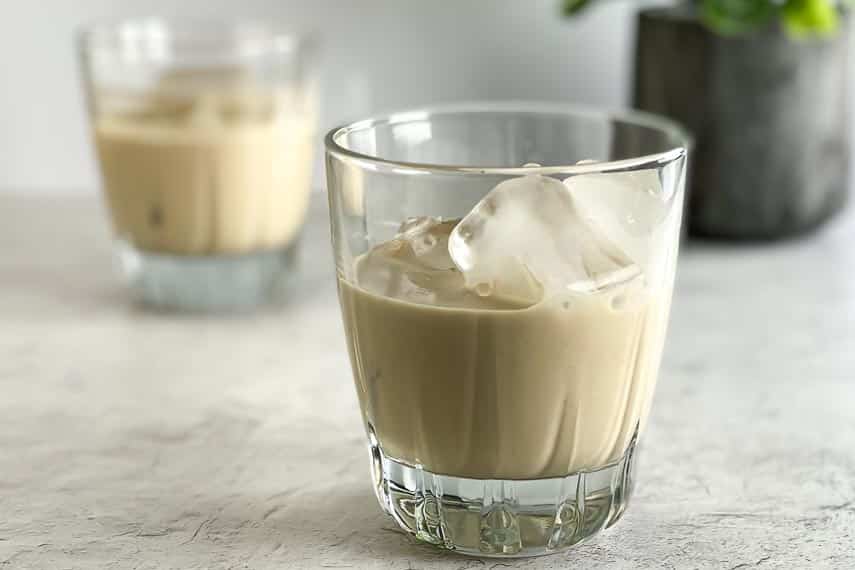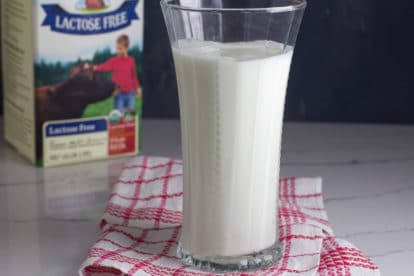If you’ve ever mixed up liquor, liqueur, and that mystery word “liquer,” you’re not alone—but today’s the perfect day to finally clear things up (and pour yourself a drink while you’re at it).
Every October 16, National Liqueur Day gives cocktail lovers a reason to toast to one of the most flavorful and misunderstood categories in the world of spirits. From glossy bottles of amaretto and Baileys to vibrant orange Grand Marnier, liqueurs add sweetness, depth, and elegance to both cocktails and desserts. Yet even seasoned drinkers get tripped up by the words liquor, liqueur, and liquer. They look similar, sound similar, and sometimes get used interchangeably, but they mean very different things. Understanding what sets them apart can make you a smarter shopper and a better home mixologist.
The Meaning Behind the Words
At first glance, liquor and liqueur appear to be just spelling variations, but they actually refer to separate categories of alcohol. The word liquor comes from the Latin liquere, meaning “to be fluid,” and historically referred to any liquid, not just alcohol. Over time, it became shorthand for strong distilled spirits such as whiskey, vodka, rum, gin, and tequila. Liquor is what forms the foundation of most mixed drinks and cocktails. It is unsweetened, high in alcohol content, and usually ranges from 35 to 50 percent alcohol by volume (ABV).
By contrast, liqueur is derived from the same root but evolved to describe sweetened, flavored alcoholic beverages that are made by infusing a base liquor with herbs, fruits, spices, or other flavorings. Most liqueurs fall between 15 and 30 percent ABV, though some are stronger. The sweetness and flavor complexity make them ideal for sipping after dinner or adding character to cocktails.
And then there is liquer—a common misspelling that does not refer to any real category. It appears frequently in menus, social media posts, and even on some homemade bottles, but it is simply a typo or a misunderstanding of how the French-origin word liqueur is spelled. In short, liquor is the spirit, liqueur is the sweetened version, and liquer is just a linguistic hiccup.
Liquor: The Spirit of Spirits

Liquor is the backbone of the alcohol world. It is made through distillation, a process that separates alcohol from a fermented liquid like grains, fruits, or sugarcane by heating it until the alcohol vaporizes and then condenses. What remains is a concentrated form of alcohol with bold flavors that vary depending on the ingredients and production method.
Common examples include:
- Whiskey: Distilled from fermented grain mash, aged in wooden barrels, and known for its caramel, vanilla, and oak notes.
- Vodka: Made from grains or potatoes, distilled multiple times for purity, and known for its clean, neutral flavor.
- Rum: Distilled from sugarcane or molasses, often aged, with flavors that range from light and grassy to dark and spicy.
- Tequila: Made from blue agave and produced only in specific regions of Mexico, offering earthy and peppery notes.
- Gin: Infused with juniper berries and botanicals during distillation, giving it a signature herbal aroma.
These base liquors are what bartenders use to build drinks. A martini, margarita, or old fashioned all starts with liquor. What transforms those cocktails into something more layered or dessert-like is usually the addition of a liqueur.
Liqueur: The Art of Sweetened Spirits
A liqueur begins with one of those liquors as its base, but then it goes through a secondary process of infusion and sweetening. That is where the magic happens. Makers add fruits, nuts, herbs, spices, flowers, or creams, and sometimes even edible gold flakes, to create unique profiles that can range from rich and indulgent to light and herbal.
For example, Grand Marnier is made by blending cognac (a type of brandy) with bitter orange essence and sugar. Amaretto uses almonds or apricot pits for its nutty sweetness. Frangelico incorporates hazelnuts, while Chartreuse contains over 130 herbs and plants, giving it a mysterious, complex flavor that has been copied for centuries but never perfectly replicated.
Most liqueurs are enjoyed in smaller quantities because of their sweetness. They can be sipped straight, poured over ice, mixed into cocktails, or drizzled over desserts like ice cream or tiramisu. Classic liqueur-based cocktails include the White Russian (vodka, coffee liqueur, and cream), Margarita (tequila and orange liqueur), and Irish Coffee (coffee, Irish whiskey, and Irish cream).
Cream vs. Clear: The Many Faces of Liqueurs
Liqueurs come in two broad categories: cream-based and non-cream.
Cream liqueurs use dairy or plant-based cream blended with alcohol and flavorings. The most famous is Baileys Irish Cream, but there are also coffee cream liqueurs, chocolate versions, and even pumpkin spice variations during the holidays. These liqueurs are rich, velvety, and often served over ice or in warm drinks.
Clear liqueurs, on the other hand, include fruit-based varieties like triple sec, herbal ones like Chartreuse or Bénédictine, and nut-flavored types such as Amaretto or Frangelico. They have a wider range of uses in cocktails since they add flavor without altering the texture of the drink.
How to Spot the Difference in a Store
When you are shopping, the difference between liquor and liqueur can be spotted easily if you know what to look for. Liquors are usually found in tall bottles with simpler labeling and a higher proof number, often between 70 and 100. They are sold in larger quantities because they are the base of so many drinks.
Liqueurs, on the other hand, are often in ornate bottles and may list flavor descriptors on the label, such as “coffee,” “hazelnut,” or “orange.” They typically have an alcohol content between 15 and 30 percent and may feel heavier when shaken due to added sugar. Price can also be a clue, as many liqueurs are premium products created from secret recipes that have been passed down for generations.
The Role of Liqueur in Culinary Creations
Liqueurs are not limited to the bar. Chefs use them to enhance desserts and sauces because of their concentrated flavors. A splash of orange liqueur brightens chocolate ganache, amaretto adds a toasty note to whipped cream, and Kahlúa deepens the flavor of tiramisu or coffee ice cream. Even savory dishes can benefit—cream sauces or glazes often use a dash of herbal or fruit liqueur to balance richness.
Because the alcohol cooks off at high temperatures, what remains is the aroma and complexity of the added flavorings. In this way, liqueur bridges the world between cooking and mixology.
The Cultural and Historical Appeal
Liqueurs have a fascinating history. Many of the oldest were originally made by monks and apothecaries who infused spirits with herbs for medicinal purposes. Chartreuse and Bénédictine both date back centuries and were initially promoted as tonics for health and longevity. Over time, people began drinking them for pleasure rather than medicine.
As sugar became more widely available, liqueurs grew sweeter and more accessible. By the 18th century, they were associated with sophistication and luxury. European royalty served them after meals in elegant crystal glasses, a tradition that continues today. The popularity eventually spread to the Americas, where liqueurs became key ingredients in early cocktails during the late 19th and early 20th centuries.
Liquer: The Typo That Keeps Showing Up
Despite the clear definitions, the word “liquer” still pops up frequently. It is a common misspelling of “liqueur,” often seen on menus or social media. Some assume it is an alternate spelling, but it has no basis in English or French. The correct spelling is always liqueur when referring to a sweetened, flavored spirit. So if you see “liquer” written anywhere, consider it an honest mistake rather than a new beverage category.
How to Celebrate National Liqueur Day

National Liqueur Day is the perfect opportunity to explore the art and craft behind these elegant spirits. Try sampling a few side by side to appreciate how varied they can be. Compare something nutty like amaretto with a herbal liqueur such as Bénédictine or a bright citrus one like Cointreau. You will quickly notice the differences in sweetness, viscosity, and aroma.
For a simple cocktail, mix vodka with coffee liqueur and cream for a White Russian, or stir together bourbon, coffee liqueur, and a hint of orange liqueur for a rich twist on an old fashioned. If you prefer something lighter, top sparkling wine with a splash of elderflower liqueur for a floral spritz.
You can also celebrate by cooking with liqueurs. Add Irish cream to your brownie batter, soak fruit in Grand Marnier before baking, or create a caramel sauce spiked with Frangelico. The possibilities are endless.
The Takeaway
The next time you are in a bar or liquor store, remember that liquor and liqueur are not the same. Liquor is the strong, unsweetened spirit that forms the foundation of cocktails. Liqueur is the sweeter, often lower-alcohol cousin that adds flavor, depth, and a touch of luxury. And liquer? That one is just a misspelling that makes grammar sticklers cringe.
National Liqueur Day is a reminder to slow down, savor, and appreciate the craftsmanship that goes into every bottle. Whether you sip it neat, mix it into a cocktail, or drizzle it over dessert, a good liqueur turns an ordinary moment into something a little more indulgent. So pour yourself a glass, raise it high, and toast to the difference that a few letters—and a little sweetness—can make.






